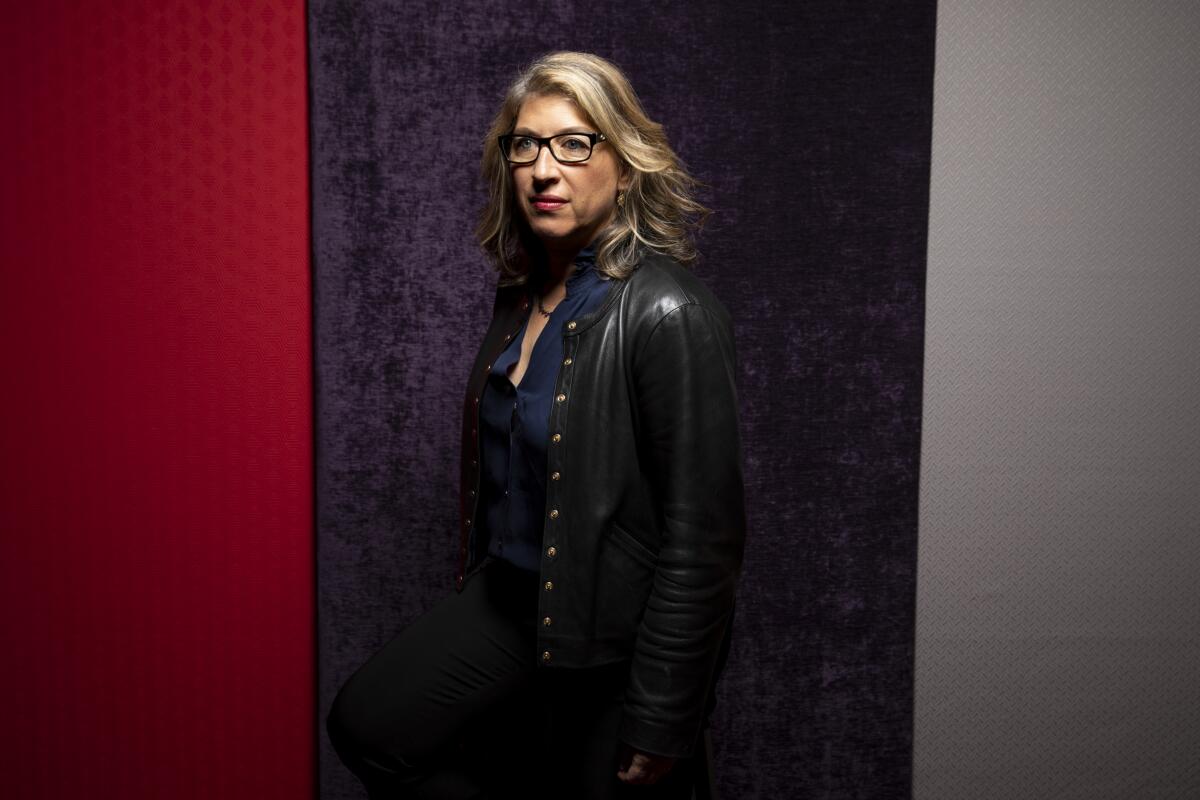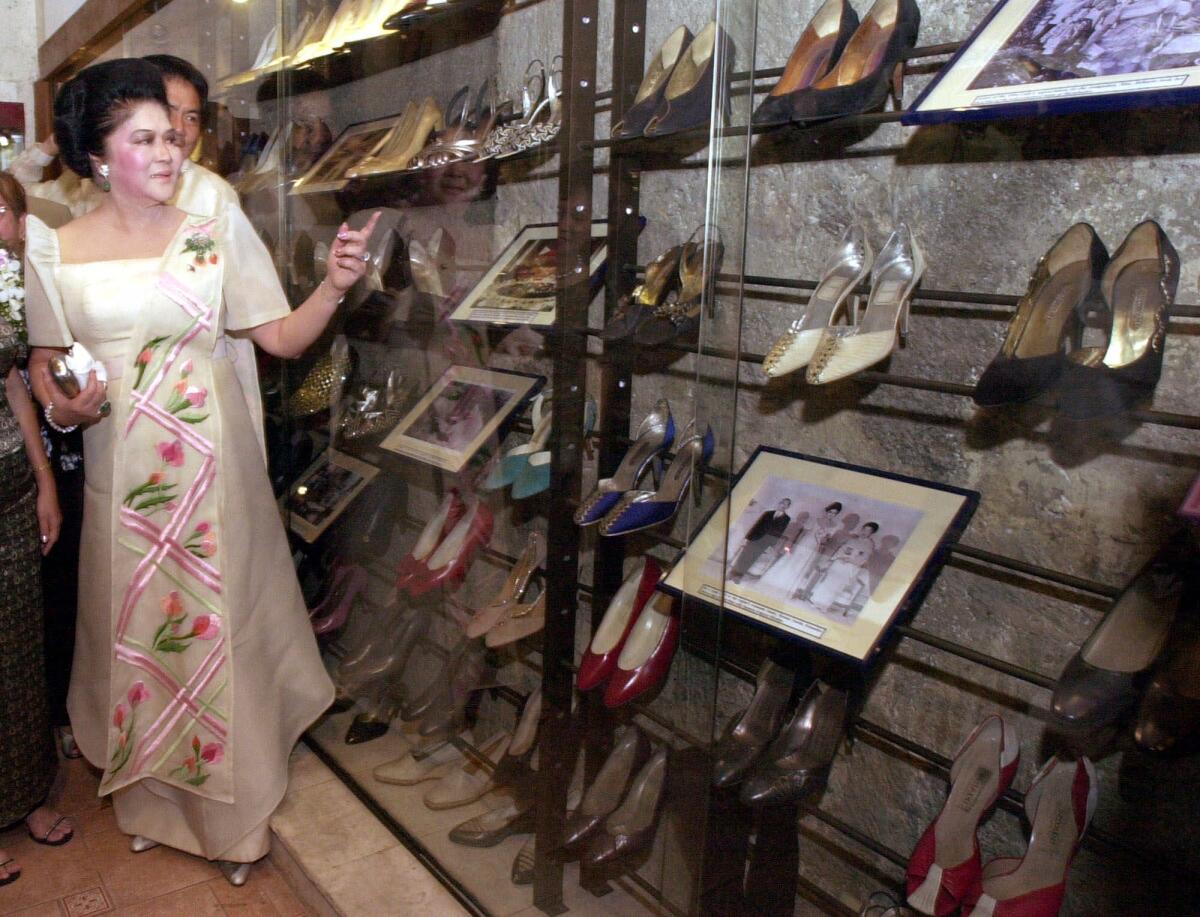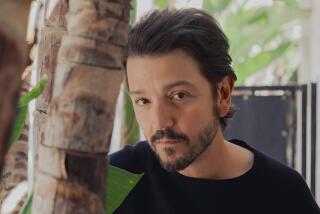How dangerous can a president be? Lauren Greenfield’s Imelda Marcos documentary ‘The Kingmaker’ has some answers

Lauren Greenfield had traveled over 7,000 miles — from Venice Beach to the Philippines — before she realized that the subject of her documentary was an unreliable narrator. The filmmaker was in Southeast Asia to interview Imelda Marcos, who’d been the first lady of the archipelagic country for 21 years.
Initially, Greenfield was interested in making a film about Calauit Island, where in 1976, Marcos persuaded her husband — Ferdinand Marcos, the president of the Philippines — to relocate 104 wild animals from Africa. After going on safari in Kenya, Imelda Marcos became envious that her country did not have exotic species and decided to ship giraffes, zebras, gazelles and more to Calauit. The 245 families living on the 14-square-mile island in the South China Sea were evicted to make room for the animals.
Four decades later, however, the health of the wildlife on Calauit was in decline. After President Marcos was forced out of power in 1986 — he and his wife went into exile in Hawaii — the government stopped looking out for the animals. Greenfield only learned of the island’s existence after reading a 2013 Bloomberg article in which a journalist visited the sickly, inbred herds.
So when Greenfield finally sat face to face with Imelda Marcos at a lavish apartment in Manila, the director asked what she thought about what had become of the animals on Calauit.
“There are no animals on Calauit,” Marcos replied with certainty.
Except that Greenfield knew that wasn’t the case. She had already been to the island herself, camping among pythons and eland antelope. There was no fresh water, cellphone service or electricity. But there were dozens of animals.
“I found out that a lot of things she said were not true or did not align with historical accounts or first-person testimonials,” Greenfield said, reflecting on the interview. “So I kind of let her tell her story. She’s one of those people that is so strong that you just have to catch what comes to you. There’s no guiding or — ‘Can we talk about this?’ She gives you what she wants to give you. She’s in control.”
But “The Kingmaker,” as the documentary would go on to be called, is not without context. The movie, which premiered at the Venice Film Festival in August and opens in select cities including Los Angeles this weekend, is a portrait of a woman whose words are often in stark contradiction with reality.
Best known for owning 3,000 pairs of shoes, Marcos was often depicted in the international media as the epitome of glamour, drawing comparisons to Jackie Kennedy. During her husband’s reign — which began in 1965 and ended in 1986 — the dictator became increasingly controversial, eventually imposing martial law in the Philippines. But the affable Marcos was mostly able to retain a positive reputation, sent by her husband to charm the likes of Moammar Kadafi, Saddam Hussein and Richard Nixon.
By the time Greenfield got to her, she was in her 80s, having returned from the U.S. to her native country in 1991. She and her husband — who died in 1989 — had been accused of embezzling between $5 and $10 billion from the Filipino people during their time in power. Nevertheless, she was still embraced by many in the nation, running numerous times for congress and winning.
“For her to get voted in, I was, like, ‘How does that happen?’” Greenfield recalled of her early interest in Marcos. “I actually thought this might be a redemption story for her. I think there was always a question of how much was her and how much was her husband. She was a young innocent when they got together.”
Growing up, however, Greenfield viewed Marcos as an iconic figure not so much because of her politics but because of her extensive shoe collection. Since the inception of her career, the filmmaker has been interested in exploring beauty, wealth and power. Her first documentary, 2006’s “Thin,” examined female obsession with body image by centering on an eating disorder clinic. In 2012, she made “The Queen of Versailles,” about a rich Floridian couple determined to build the largest single-family home in America. She has also viewed luxury through photography, snapping images of Beverly Hills teenagers in convertibles and rappers with diamond grills on their teeth.
As a teenager, Greenfield attended the private Crossroads School in Santa Monica, where many of her classmates had famous Hollywood parents. Greenfield, meanwhile, was the daughter of professors who were more interested in joining local communes than buying their child the trendiest clothes.
“I was like, ‘Wait, I need this to fit in!’ and my parents would say, ‘What? You don’t!’” said the filmmaker, 53. “I think that started my interest in class. I wanted the things the other kids had. I’ve always kind of had that desire and tried to deconstruct it.”
From the outset of “The Kingmaker,” it is clear that appearance is important to Marcos. As she prepares to sit down for an interview with Greenfield, a swarm of assistants surround her, touching up her made-up face with powder.
“Is my makeup OK? Can you check? Go check,” she implores her staff. “How about my tummy? It doesn’t look big?”
“It’s visible, but it is not obvious,” an employee replies.
Greenfield believes beauty and money “have a moral purpose” for Marcos. In the film, the politician says she views herself as a “star in the dark of night” for the poor — meaning she dresses extravagantly and pushed her husband to build elaborate palaces so the impoverished could have beauty in their lives too.
“This wasn’t a wealth story like anything I’ve done before,” the filmmaker said. “It wasn’t wealth for materialism or showing off — it was wealth for power and admiration. She loves the people loving her.”
The filmmaker R.J. Cutler, who met Greenfield when they were both undergraduates at Harvard University, said he’s noticed a major evolution in her work since he produced her first documentary. Teaming up with her in the same role on “The Kingmaker,” Cutler said he sees her latest film as “Lauren’s vision fully realized.”
“She’s an artist in full bloom,” said Cutler, who went head to head with Anna Wintour while making “The September Issue.” “She’s able to fully describe Imelda while allowing her own voice to be fully heard. She has the ability to illuminate something through a moment or gesture, so the audience makes their own keen observations. Imelda deserves a slicing open that no one can do like Lauren.”
What Cutler is referring to is the way in which the film juxtaposes Marcos’ statements with opposing footage. After she asserts there are no animals left on Calauit, Greenfield cuts to a group of zebras grazing. When she insists martial law was the best thing to happen to the Philippines, Greenfield moves to interviews with political prisoners who were tortured at the hands of the government. Despite claims that she has been robbed of her wealth, the filmmaker shows her in a room with a Picasso painting hanging from the wall.
“I definitely felt a responsibility to have the audience know what was truth and what was not,” Greenfield said. “The thing I respect about her is that she’s willing to take the hard questions. But what you find out is her worldview, which is her own world. They were rewriting history — that’s what I was seeing. Her view of the past didn’t align with anything I had read.”

Marcos — who is now 90 and has yet to see “The Kingmaker” — has been the subject of a documentary before: 2003’s “Imelda.” The movie, directed by Ramona S. Diaz, was well-reviewed and tracks many of the same highs and lows in Marcos’ life. Greenfield said she watched Diaz’s “terrific” movie as part of her research, but also noted that “in the 16 years between the two films, it is unbelievable how much the story about Imelda Marcos, the family’s stature and the political situation of the Philippines has changed.”
Andy Bautista, one of the subjects in “The Kingmaker,” said he learned “snippets of truth” from the film that even he had been previously unaware of. Bautista is the former chairman of the Philippines’ Presidential Commission on Good Government — the group tasked with tracking down the Marcos’ ill-gotten wealth. It wasn’t until he watched the new documentary that he heard Marcos openly reveal she has money in 170 global bank accounts.
“Lauren was able to pick up a lot of things that I wish the people knew,” said Bautista. “The lessons that you can learn from this film are particularly important for the Filipino people, but they are universally applicable in the sense that you can see that the rise of authoritarianism in various parts of the world. It should help raise red flags.”
By the end of her time abroad — eight trips over five years — Greenfield said she was continually drawing parallels between the Philippines and the U.S. In 2016, Rodrigo Duterte was elected president of the Southeast Asian country, with mutual support from the Marcos family; he quickly began clamping down on freedom of the press and encouraging the police to use force in the drug war.
“And once Trump was elected, he started to attack the media, and our democratic institutions started to feel endangered in a way I had never imagined before,” she said. “I saw the linkage, and I was definitely thinking about how fragile everything we take for granted is — how in one election, it can just go away, and you can go back to a past you never thought you would have.”
Lauren Greenfield’s latest documentary, “The Kingmaker,” explores the extravagant lifestyle and rise to power of former First Lady Imelda Marcos in the Philippines.
More to Read
Only good movies
Get the Indie Focus newsletter, Mark Olsen's weekly guide to the world of cinema.
You may occasionally receive promotional content from the Los Angeles Times.











